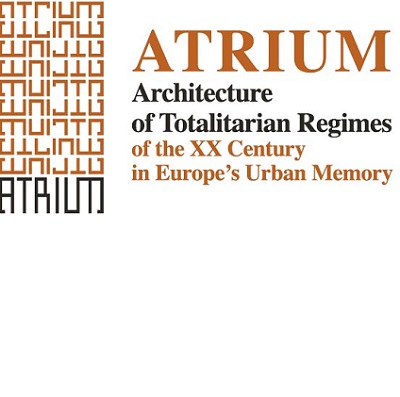
Torviscosa new member of ATRIUM
PRESS RELEASE
On the 6th and 7th June, in Sofia (Bulgaria), the ATRIUM Route organised the meetings of its Board of Governors and General Assembly.
ATRIUM, acronym of Architecture of Totalitarian Regimes of the XXth century In Europe’s Urban Memory, is the cultural itinerary, certified by the Council of Europe, which aims at developing cultural tourism around a new but awkward topic: the urban and architectural heritage left by the European totalitarian regimes of the XXth Century.
Indeed, all the Route’s territories preserve significant examples of public and private buildings and urban planning dated back to the Italian Fascist regime and/or the European Communist regimes of the 1900s.
Among other things, the ATRIUM members in Sofia discussed about the renewal of the Board of Governors for years 2017-2019, the promotion of networking projects on culture and tourism and, last but not least, the adhesion of 3 new members, such as the Italian Municipalities of Ferrara and Torviscosa and the Albanian capitol city Tirana.
So, the new Board of Governors, which will be in charge for 3 years, is composed of: the ATRIUM President Elisa Giovannetti (Italy, Forlì) and the ATRIUM Vicepresident Irina Belušić Maggi’ (Croatia, Labin), the Town Councillor Massimo Maisto (Italia, Ferrara), the Mayor Giorgio Frassineti (Italy, Predappio) and the Councillor Gian Matteo Peperoni (Italy, Forlimpopoli), the Mayor Ivo Dimov (Bulgaria, Dimitrovgrad), the President of the Iasi County Maricel Popa (Romania), the Deputy Mayor of Tirana Abaz Hado and, finally, the representative (personality to be appointed) of the Municipalities of Sofia (Bulgaria).
Therefore, today, the ATRIUM Route extends to 5 European countries in 16 different areas, in particular: in the 9 Italian Municipalities of Bertinoro, Castrocaro Terme e Terra del Sole, Cesenatico, Forlì, Forlimpopoli, Predappio, Ferrara, Tresigallo (FE) e Torviscosa (UD), in Croatian Municipalities of Labin, Rasa and Lastovo-Uble, in Sofia and Dimitrovgrad in Bulgaria, in the Iasi County (Romania) and, lastly, in Albania in the capital city Tirana.
Common feature to the so called “ATRIUM” urban heritage – both the abandoned one and that integrated within the daily citylife because of functional needs – is thus the strong historical and symbolic meaning of these architectures which require to be rightly remembered, analysed and told, in the frame of the European history of the XXth Century.
For that reason ATRIUM aims at transforming this tangible and intangible heritage, often also dissonant, in something interesting from a cultural and tourist point of view, as well as, in an opportunity to reflect critically on the history of the regimes which produced it – as it is assessed by the ATRIUM Statute, where every attempt of historical revisionism in favour of totalitarian regimes is clearly rejected.
Hence, the presence in Sofia of the ATRIUM members has reaffirmed the will to improve what the Route did so far, both geographically and about the quality and the quantity of the activities.
Specifically, a new encouragement will be done to transnational network initiatives which will be well represented by the simultaneous and common actions which could be undertaken by the members for the next heritage days (23-24 September 2017): during those days in every ATRIUM venue will be organised some initiatives for the valorisation and promotion of the local tangible and intangible heritage, in order to offer to citizens and tourists the possibility to know and access the ATRIUM architectures and urban spaces.
1

